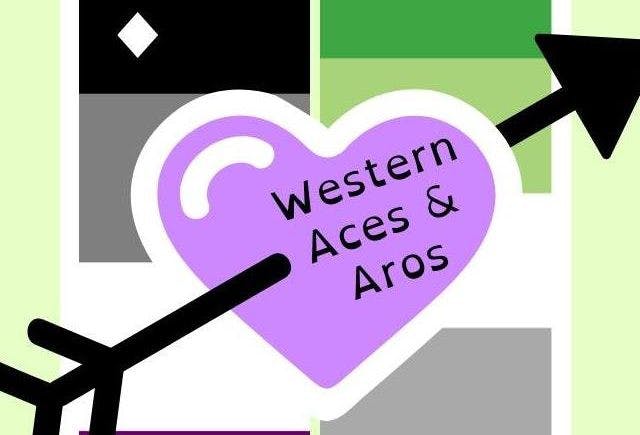
Western Aces and Aeros meets regularly as part of the “guild” of queer clubs on campus and has a good relationship with them.
By Sadie Fick
Many queer people know the struggle of finding their identity and community.
This struggle is particularly difficult for people whose identities exist in the margins, such as people who identify as bisexual, agender or asexual.
The asexualilty spectrum, or aspec, includes asexuality, aromanticism, grey-asexuality, demisexuality and others. These are all categorized by experiencing very little to no sexual and/or romantic desire.
Amanda Mollet is the author of several studies on the experiences of aspec college students and a professor at the University of Kansas.
“As students try to think about who they are, college is a pivotal time,” said Mollet. “But, because of the invisibility of asexuality, many students don’t even know what they’re looking for.”
One way to increase the visibility of asexual identities on college campuses is to include the “A” for asexual in the LGBTQIA+ acronym.
Mollet said increased visibility is the number one thing the aspec students she talks to want from colleges.
“It’s indicative of how little acknowledgement there is for asexuality that students can’t even imagine what something more [than increased visibility] would look like, because people don’t even know they exist,” Mollet said.
Elliot Martin, a fourth-year student and president of Western Aces and Aeros, said some people don’t see aspec individuals, especially ones who present as outwardly straight, as part of the queer community.
There’s the impression that aspec people aren’t discriminated against because some can pass as straight, Martin said.
In Mollet’s 2018 study, “Asexual Borderlands: Asexual collegians’ reflections on inclusion under the LGBTQ umbrella,” aspec students reported often feeling like queer communities had the most expectations for them, questioning if they were “queer enough.”
“I think there are some actual parallels between marginalization that bi folks experience and ace folks experience,” said L. K. Langley, director of LGBTQ+ Western.
To counter the margninalization that aspec students face within the queer comunity, Langley said they specifically mention aspec students at workshops for faculty and they try to have aspec speakers and panelists at events. They also meet with students of all orientations to provide individual support and connection to resources.
Despite Langley intentionally making LGBTQ+ Western events inclusive of aspec students, neither the promotional materials for events nor LGBTQ+ Western’s website make it clear that aspec students are invited.
Langley said they don’t refer to particular identities in promotional materials, instead they use general terms like “queer” or “LGBTQ+” in an attempt to include all identities.
This can leave aspec students still wondering if they are “queer enough.”
“I’ve never noticed any gatekeeping in the [Western] community,” Martin said. “Cis heteronormative culture pushes sex so much, and a lot of the time queer communities can be a safe space away from that.”
Western Aces and Aeros meets regularly as part of the “guild” of queer clubs on campus and has a good relationship with them, Martin said.
Western’s queer community is inclusive of aspec identities, but it’s difficult to know that before joining those spaces.
Martin said they want Western LGBTQ+ to include “I” for intersex and “A” for asexual in the acronym to make it clear that aspec identities are part of the queer community at Western.
“I think it sends a message when those letters are included,” Martin said.
Langley said they hadn’t had any conversations about adding letters to LGBTQ+ Western but would love to think about it. However, they said they can’t add letters before considering rebranding concerns.
But Mollet said she doesn’t think adding another letter to the acronym is the whole answer.
Mollet advocated for creating space for aspec students in queer communities and having aspec-focused groups, activities and resources outside of that.
This makes space for students who aren’t sure if they are included or who don’t identify with the queer community.
Western nearly follows this model, with both LGBTQ+ Western and a separate student club providing space for aspec students.
“There are a lot of cis, asexual, aromatic people who ace club is their only point of contact with the rest of the LGBTQ clubs on campus,” Martin said.
Adding the “A” to LGBTQ+ Western would be a strong step in inviting aspec students to see themselves as part of the community.
“It [is] such a beautiful moment when students realize ‘I’m not the only one. I’m not broken. I can have a full life, a full future. I can imagine relationships that will work for me,’” Mollet said.
Visit the Asexual Visibility and Education Network online for more information about aspec identities and communities.





